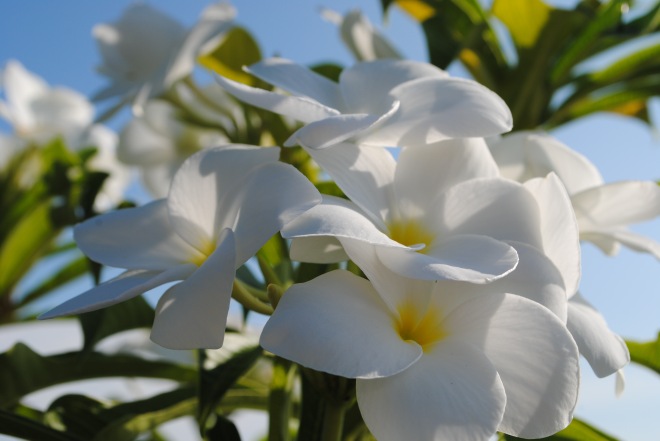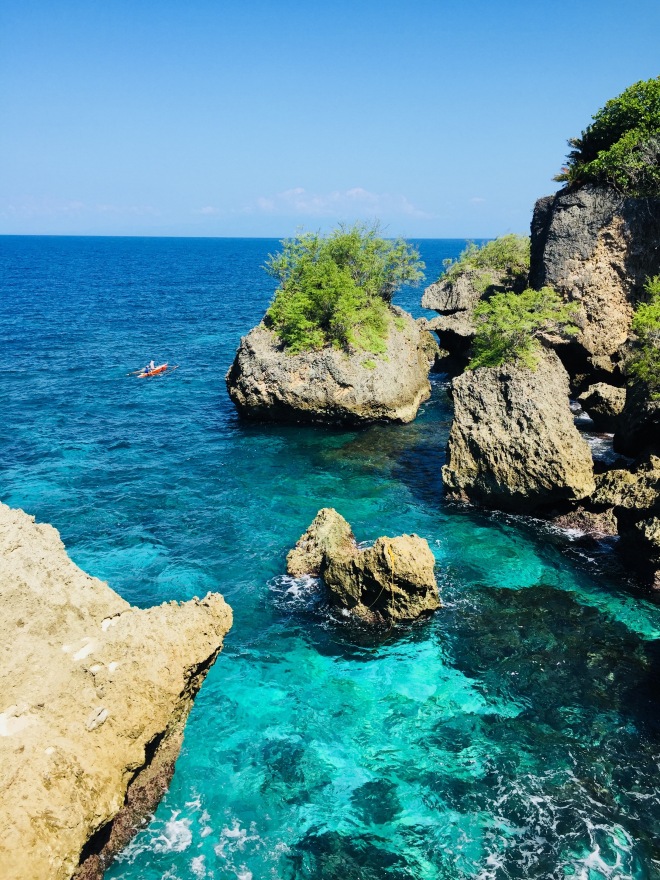
Siquijor, it isn’t the easiest tropical island to arrive at but that is half the fun! More and more I am enjoying travelling off the grid and being able to completely disconnect from the world and culture I live in and experience life a different way. I am also enjoying travelling by myself and making my own decisions and proving I can go anywhere. I also love the small connections that are always made along the journey; travelling alone; I always feel that people sense it is easier to engage and say hello and start a conversation.
I flew from Brisbane to Manila direct with Philippine Airlines, it takes about 7 hours so an easy flight. I stayed the night of my arrival in Manila in an airport hotel and then flew the next morning about two hours south with the airline Cebu Pacific to a city called Dumaguete.
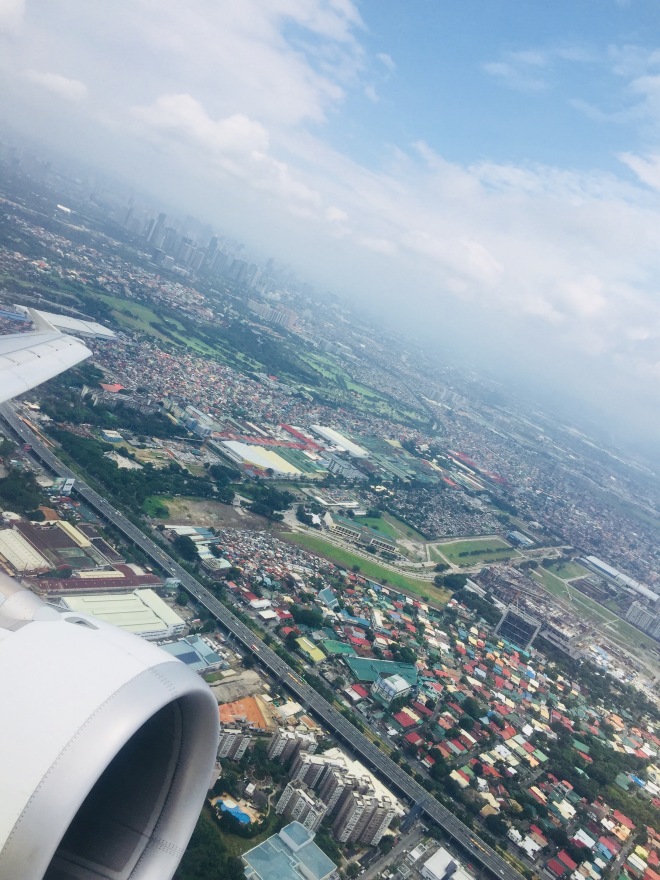 Once I arrived in the little airport of Dumaguete, I took a taxi about 20 minutes drive to the port.
Once I arrived in the little airport of Dumaguete, I took a taxi about 20 minutes drive to the port.
At the port I purchased a ticket on the next ferry to Siquijor for about $3.30 AUD. I bought a corn cob from a local vendor for 30 cents. I also started chatting to a young lady called Karen. Karen was travelling back to her home on Siquijor for the night to see her three children. She works 6 days a week in Dumaguete in a call centre and supports her family which consists of her children, her mother, her aunt (who cares for the children) and her brother who is studying at university. Karen would arrive home at about 4pm, see her family, eat, wash her clothes and then board the ferry back to Dumaguete at 6am the next day. In Dumaguete she lives in a boarding house. Karen helped me board the ferry and showed me the best place to sit, we chatted and gave each other a hug as we said goodbye in Siquijor.
The ferry ride took 2 hours, it was fairly smooth being a large barge jam packed full of cars, motorbikes, boxes and containers.
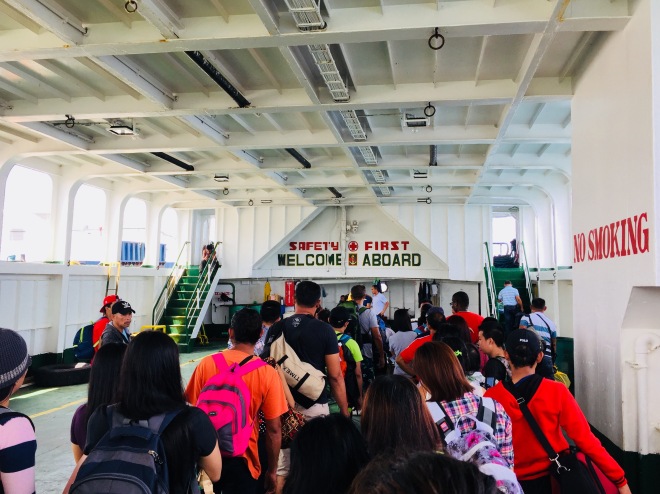
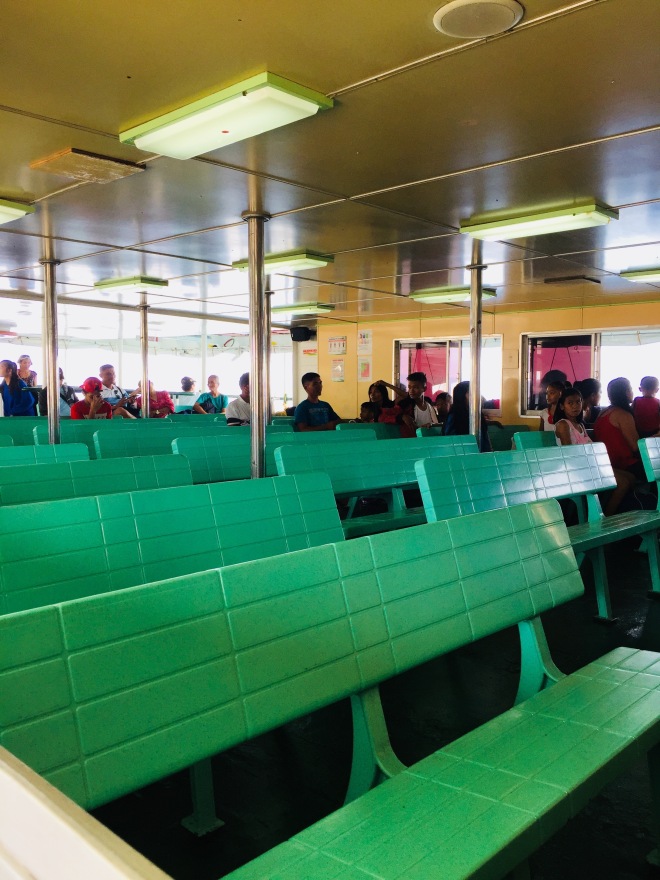
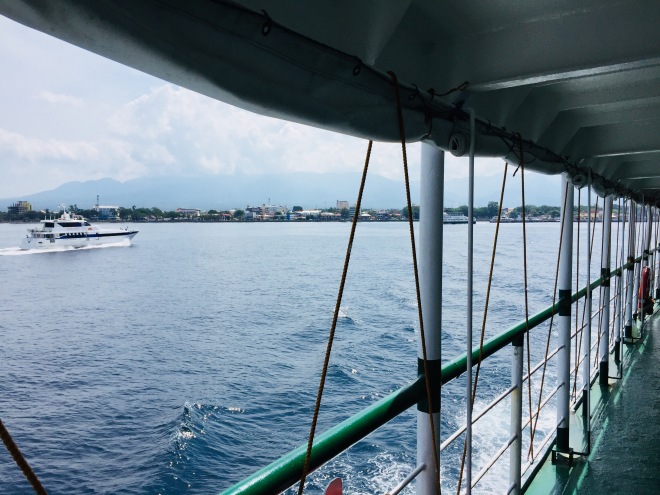
So after two days of travel, I finally arrived to the welcoming sign of Siquijor…I felt I had stepped back in time. It was relaxed as family greeted passengers, passengers handed over plastic bags full of goodies from the mainland, dogs lazily wandered around, the tricycle touts weren’t yelling or forcing their bikes but patiently waiting for any prospective interest.
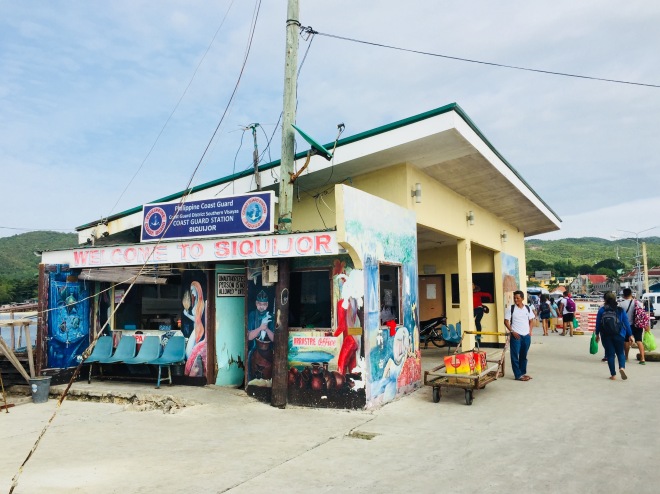
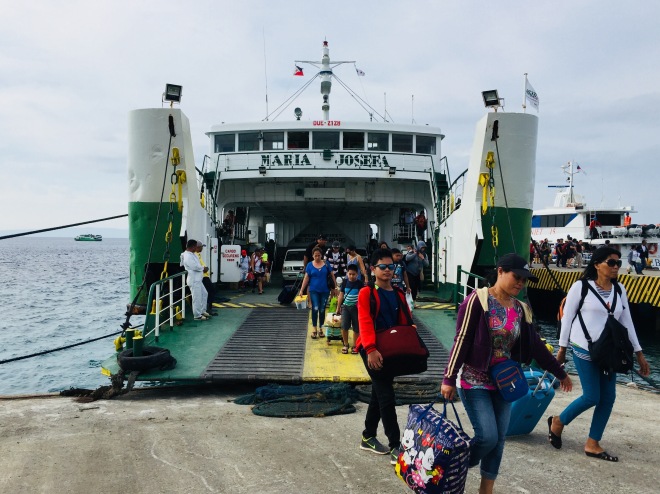
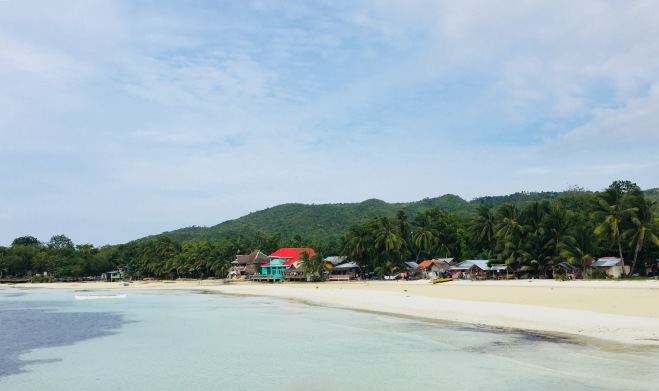
I stayed in the southern rocky coast of the island and was treated to my first Filipino sunset…
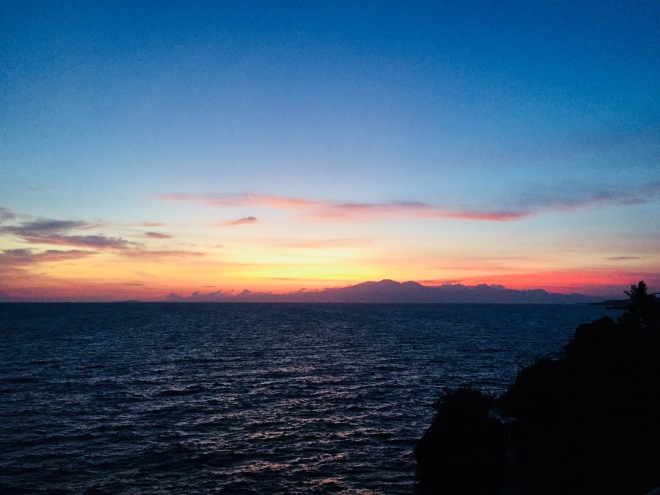
Joey, the dive instructor at the accommodation I stayed at, mentioned the afternoon I arrived that maybe I would like to try scuba diving. Maybe, I said, but I am happy to go snorkelling really and I have two books I need to read. No, he persisted, snorkelling you are looking down into the water trying to figure out what the ocean is saying, diving deep and breathing underwater, you are one with the ocean…I guess that is how I ended up spending my holiday studying for open water scuba diving.
Joey became my buddy for the week, I was the only guest diving so I was extremely lucky to have one on one training. He made me wake up at 7am most mornings to dive and then to study and then continue to learn skills in the pool.
I was quite proud of myself being able to fit my own air tank to the regulator and check the pressure, knowing how much air I had before I dived and how long I could dive for and rely fully on myself for my own survival under the water.
SCUBA is all about the breath. You have to take a long, slow inhale, followed by a slow, long exhale, over and over. It is something that is natural on land, but under the water it is always in the back of your mind.
I learnt to ascend slowly – 9 metres per one minute to avoid squeeze whether on the ears, sinuses, lungs or equipment. I was taught the hand signals of SCUBA; what to do if I ever lost my dive buddy; how to deploy a buoy; how to ascent in an emergency situation and controlled situation if I don’t access to air; how to clear my mask if it filled with water; how to take my BCD (buoyancy control device aka vest) off under the water; how to share the air regulator in case my buddy or I run out of air; the techniques to tow someone to rescue and how to read the watch (aka computer system) and compass. Phew!
Then I also learnt about pressure, decompression sickness, what a bar is (absolute/ambient pressure), how many bars are in a tank of air, how many bars are at 10 metres or 20 metres and the relative pressure changes in sea water and so on.
After the breathing, the next rule of SCUBA is too never panic. You simply cannot panic. I panicked when I got water in my mask, my nose got full of water, I forgot to breath in and out of my mouth. The problem is, is that you simply cannot swim back to the surface, you have to ascent slowly otherwise damage can be done. I had to breath, calm myself down, remember my techniques and then take action. SCUBA is kind of like life I guess. Breath, relax and somehow you can get through it.
I completed my written exam (48/50) and 5 dives. I saw some stunning coral, fish (clown, stone, frog, butter), shrimp and sea snakes. I had a clown fish swim up to my face and dart and swim around me. I looked up and saw 17 metres of water above me.
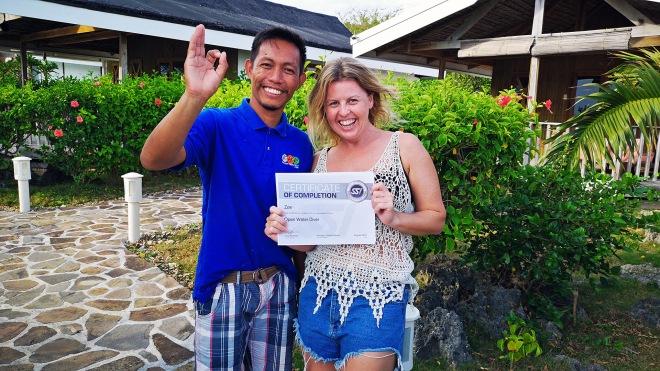
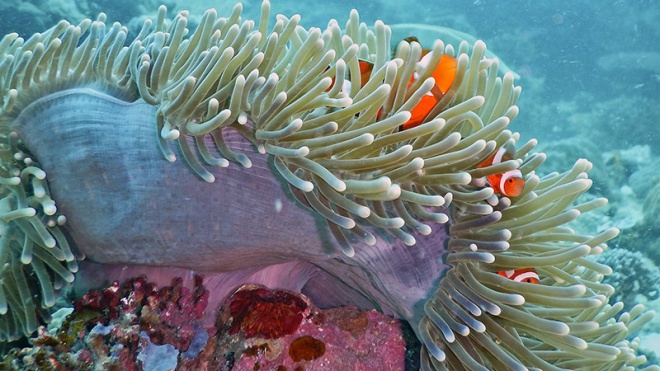
Siquijor is a small island, the coastline is approximately 102 kilometres in circumference. The highlights are it’s beautiful waterfalls, beaches, jungles and diving locations. It has a reputation as an island of black magic, voodoo and witch doctors. There are many witch doctors who live on the island who assist patients with herbal medicines and then there are the black magic doctors who can place curses and hexes on others.
I went for a walk one afternoon from my accommodation. I don’t think the villages get many blonde, white women wandering along the dirt road. There were straw huts and concrete homes scattered in corn fields, nearly every home had a bull or cow tethered to a tree, a pig, some goats and chickens. I came across a group of young teenager boys playing basketball and some little kids playing marbles. The old men in the small shop waved and said hello, there were boats moored along the sandy beach and men were cleaning and preparing fish. There was a Catholic church – 95% of the 95,000 population are Catholic.


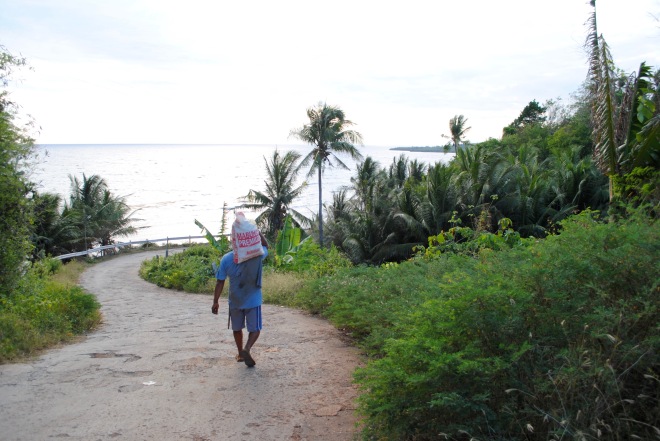
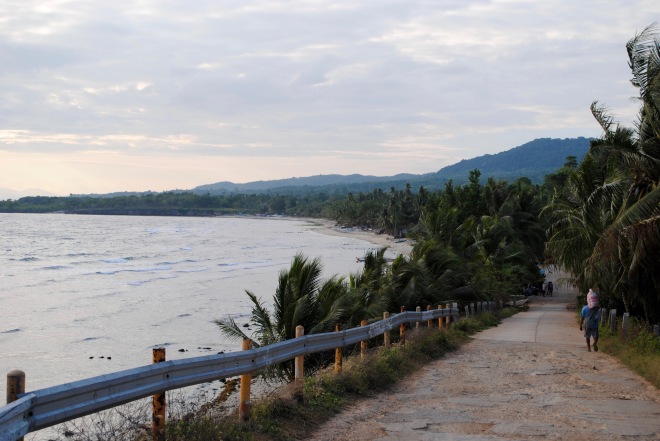

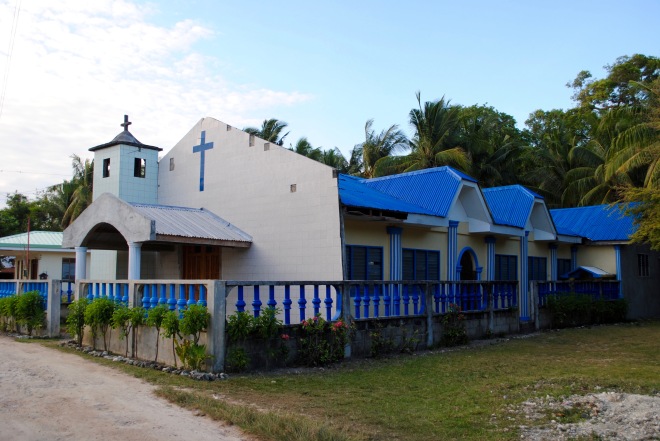
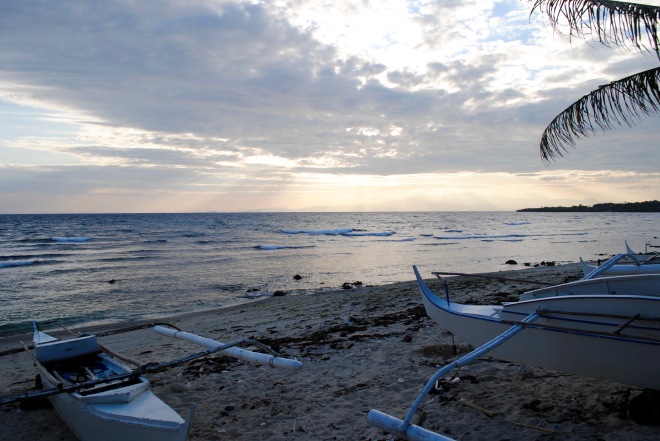
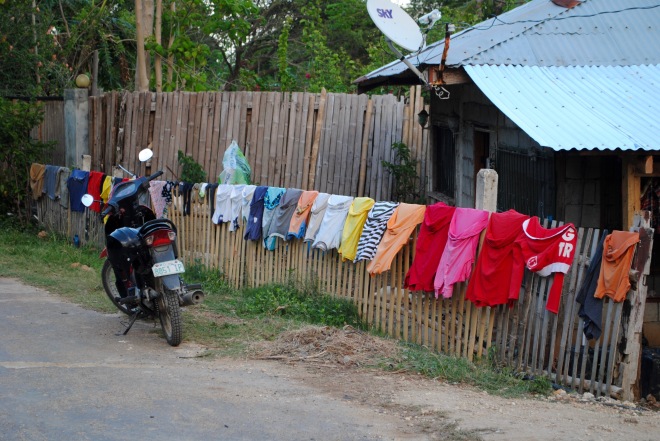
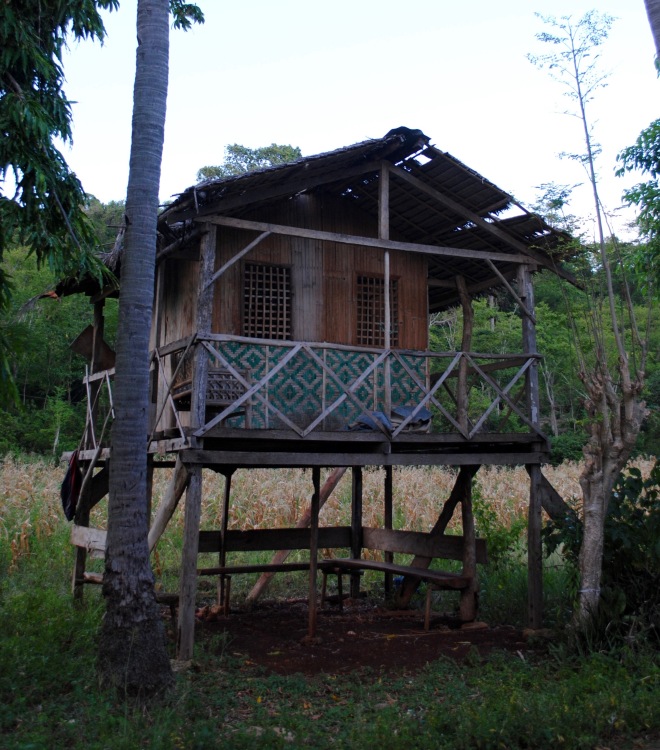
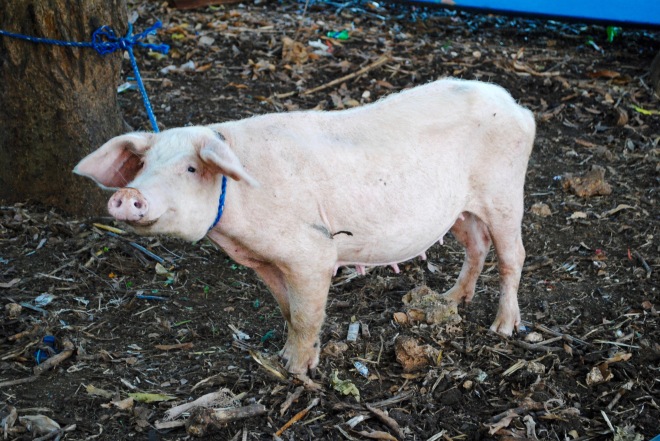
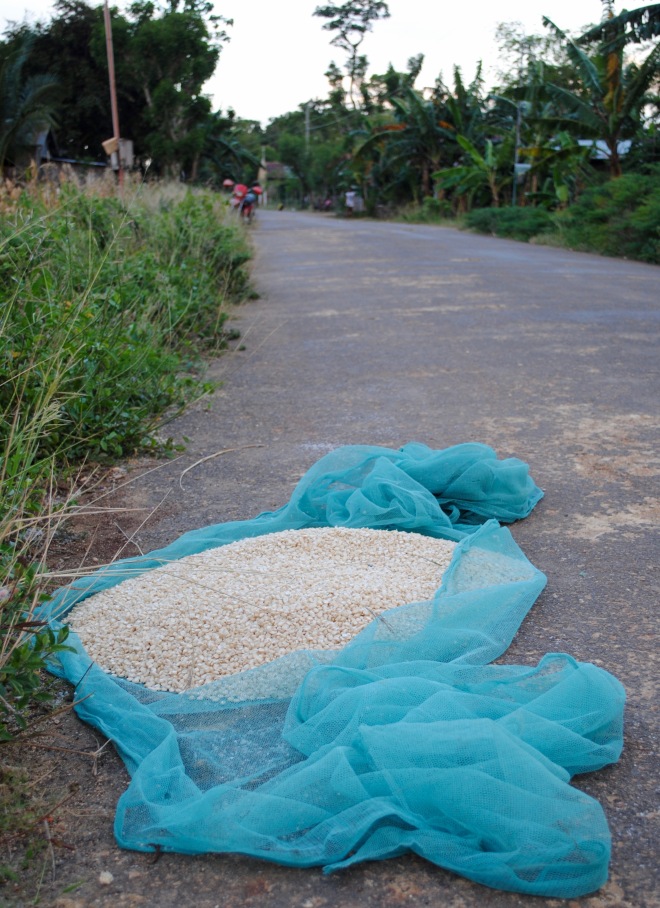
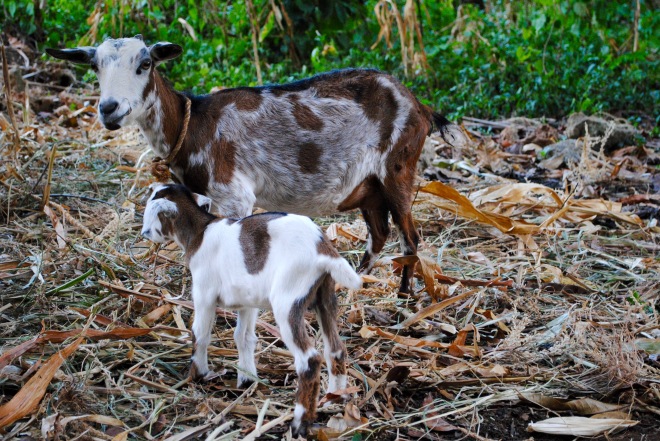
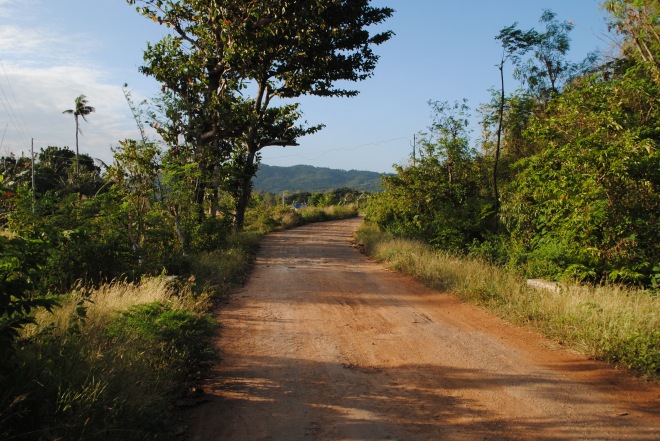
I took a tri-cycle tour of the island and first up visited the century old enchanted Balete Tree. It was here that sorcery was once performed. There is also a spring that flows from the Balete Tree and these days a pool has been formed where you can place your feet in the water and have fish nibble away at your skin. It is a little on the tourist side and was very busy the day I visited.

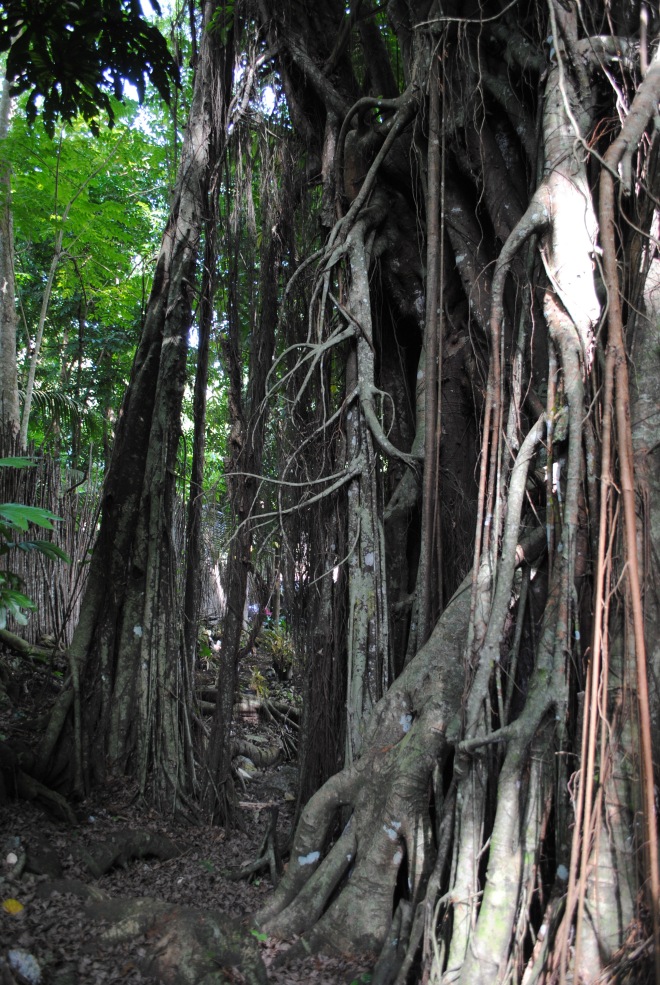
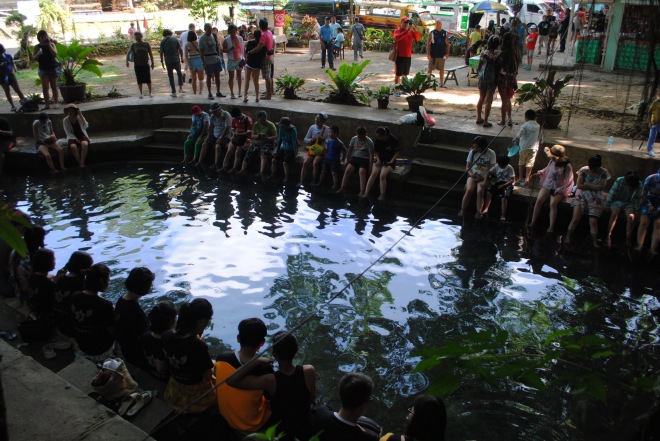
Cambugahay Falls were next to be visited and are absolutely stunning! The water is crystal clear and warm and so soothing. There are three seperate waterfalls. The falls are worth the 135 steps to get down.
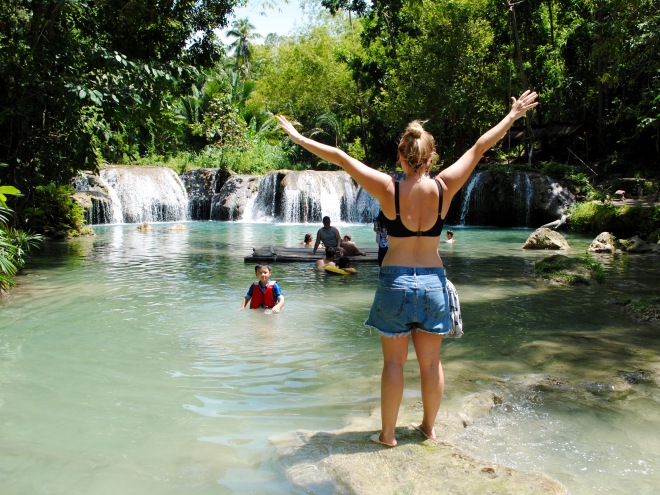
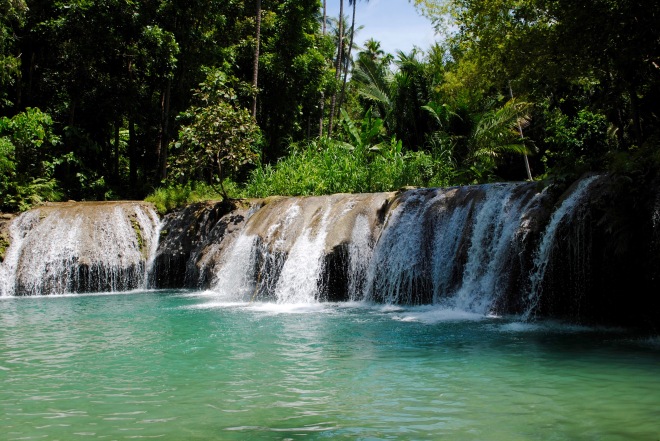
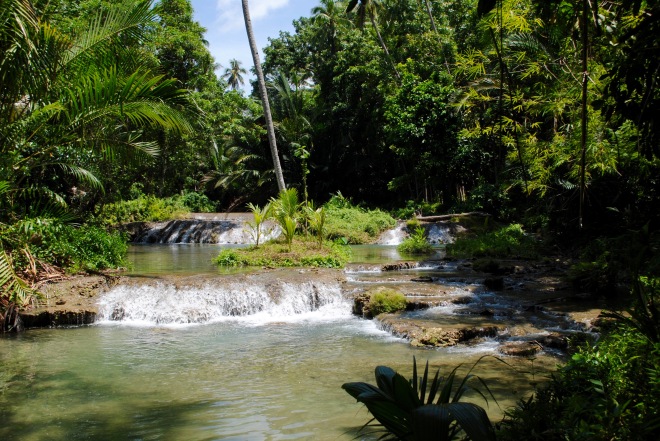
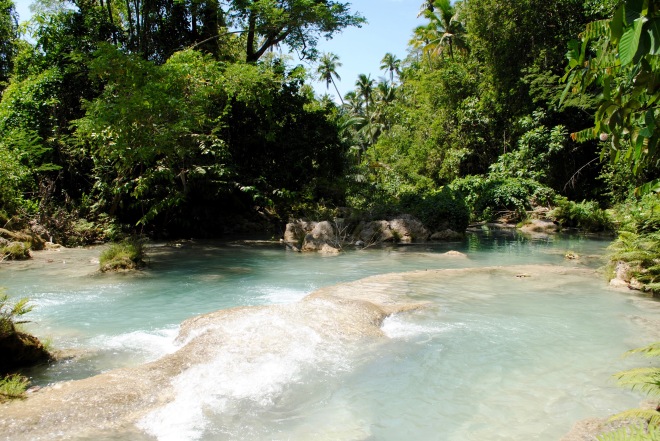
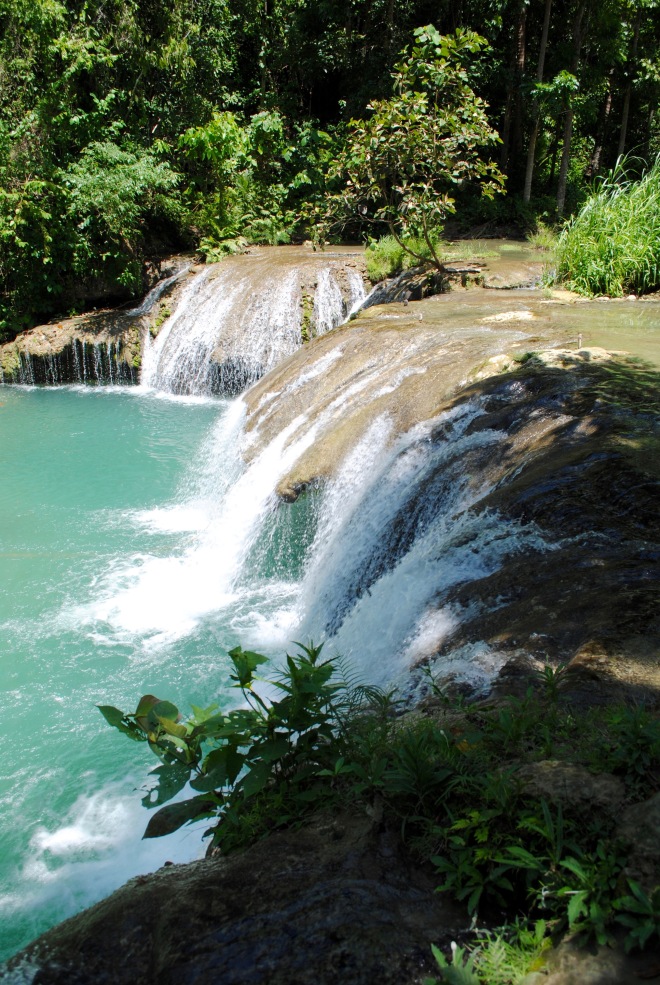
I then travelled around to Salagcloong Beach for a swim. INCREDIBLE! The water looked exactly like it does in the photos.
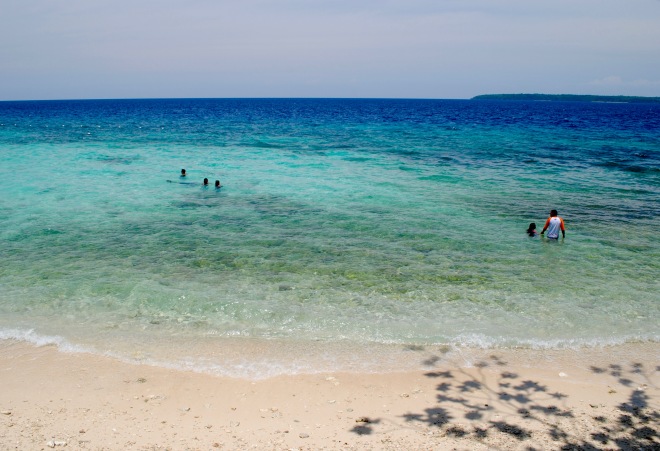
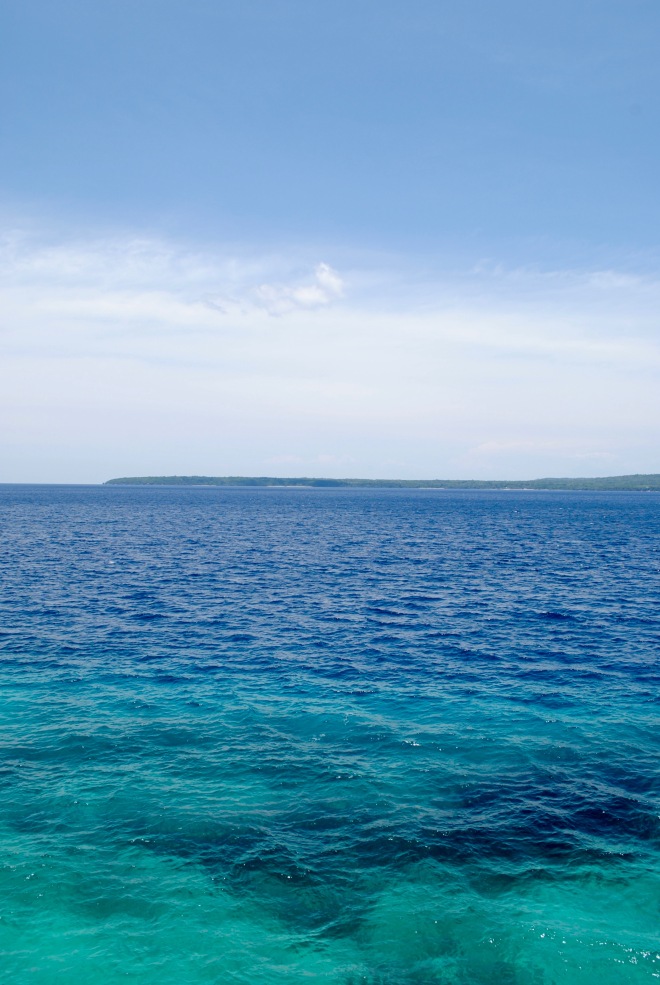
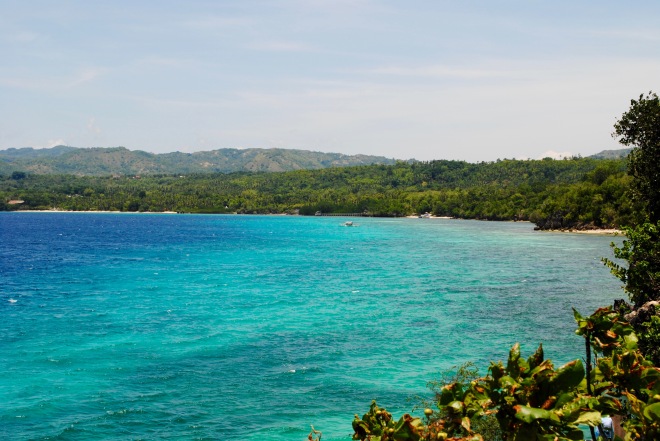
Lazi Church was an interesting place to visit – the church was built in 1857.

And then there was the rice paddies…
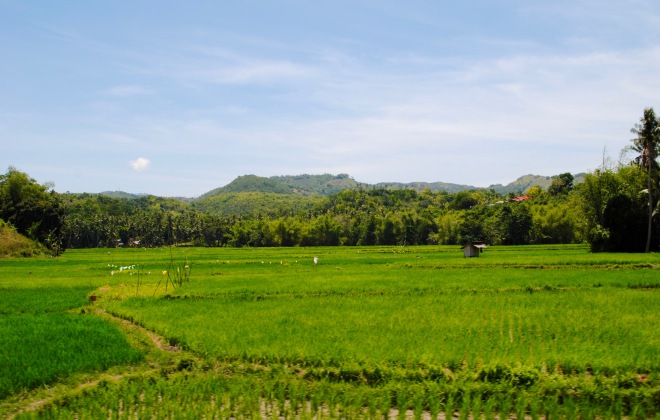
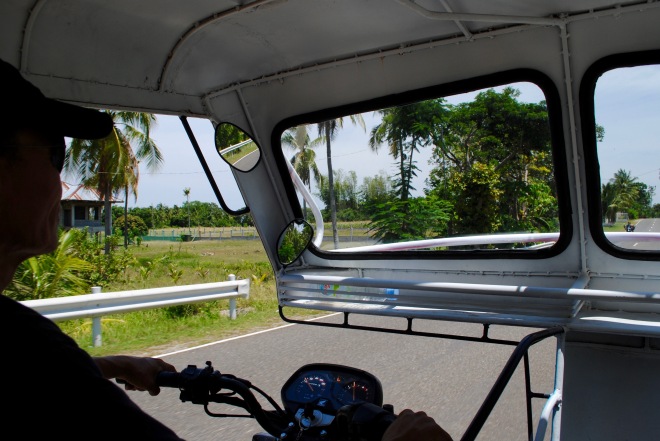
So there you have it…Siquijor!
